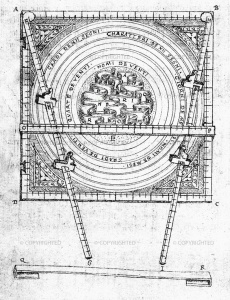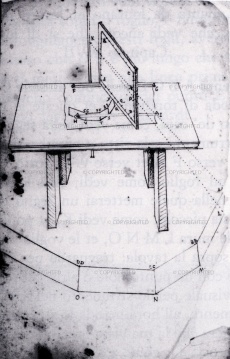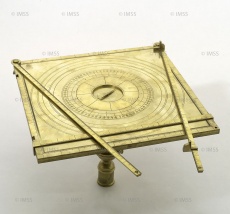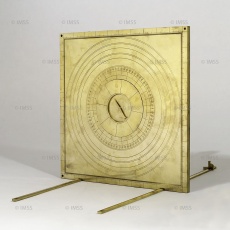Gnomon
From Inventions
m (1 revision) |
|||
| (One intermediate revision not shown) | |||
| Line 1: | Line 1: | ||
{{Template invention | {{Template invention | ||
| - | |nome= | + | |nome= |
| + | Name used since antiquity (as surveying instrument since the Middle Ages), derived from the Greek ''gnomon'', "one who knows". | ||
|inventore= Bernardo Puccini | |inventore= Bernardo Puccini | ||
| Line 7: | Line 8: | ||
|data= ca. 1570 | |data= ca. 1570 | ||
| - | |descrizione= | + | |descrizione= |
| - | + | Instrument for architectural measurements and surveying. Generally known as [[Geometrical Square | geometrical square]], the instrument is composed of a shadow square carrying a vane with optical sights. The term "gnomon" appears in several medieval treatises, in a manuscript by the Medicean engineer Bernardo Puccini, who describes a variant of his own invention, and in Vincenzo Scamozzi's treatise on architecture. In Puccini's variant, the instrument is also equipped with a [[compass]], a planispheric plate and two graduated vanes. It could also be used for perspective drawing. | |
| + | The name is generally used also for the style of a sundial. | ||
|componenti= | |componenti= | ||
Current revision as of 14:03, 13 November 2009
Name used since antiquity (as surveying instrument since the Middle Ages), derived from the Greek gnomon, "one who knows".
Contents |
Inventor
Bernardo Puccini
Historic Period
ca. 1570
Description
Instrument for architectural measurements and surveying. Generally known as geometrical square, the instrument is composed of a shadow square carrying a vane with optical sights. The term "gnomon" appears in several medieval treatises, in a manuscript by the Medicean engineer Bernardo Puccini, who describes a variant of his own invention, and in Vincenzo Scamozzi's treatise on architecture. In Puccini's variant, the instrument is also equipped with a compass, a planispheric plate and two graduated vanes. It could also be used for perspective drawing. The name is generally used also for the style of a sundial.
Bibliographical Resources
Domenico da Chivasso. Practica geometriae, ms., XIV secolo, Bibl. Laurenziana, San Marco 215, cc. 124v-144r.
Domenico da Chivasso. The Practica Geometriae of Dominicus de Clavasio (Cod. lat. Monac. 410), a cura di H.L.L. Busard, in «Archive for the history of exact sciences», 2, 1965, 6, pp. 520-575.
Lamberini, Daniela. Il principe difeso: vita e opere di Bernardo Puccini. Firenze, La Giuntina, 1990, pp. 351-403.
Puccini, Bernardo. Modo di misurar con la vista (1570-71) , Firenze, Biblioteca Nazionale Centrale, Fondo Nazionale II-282, fasc. 15.
Scamozzi, Vincenzo. L’idea della architettura universale, Venezia, 1615, Parte I, Lib. II, Cap. VIII, p. 124: “cosa che rade volte si può fare (misurare le distanze topografiche)… col Gnomone…”.
Images
Author of the entry: Filippo Camerota




